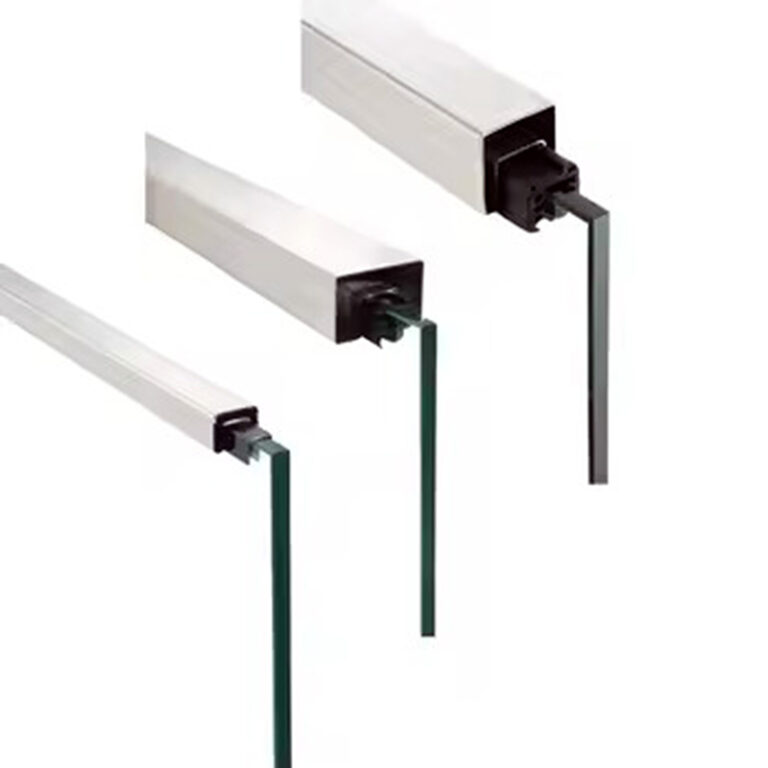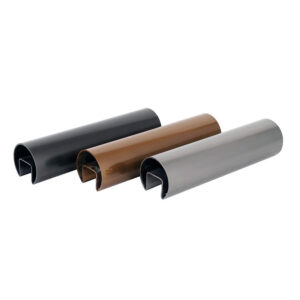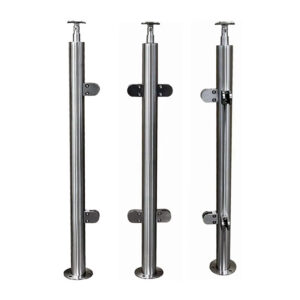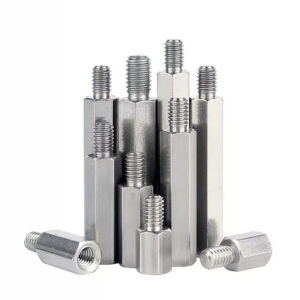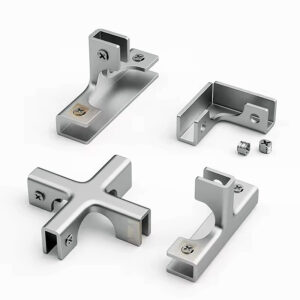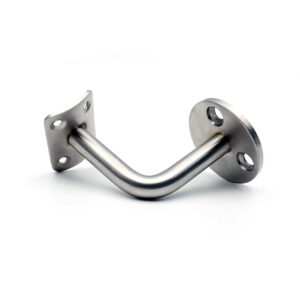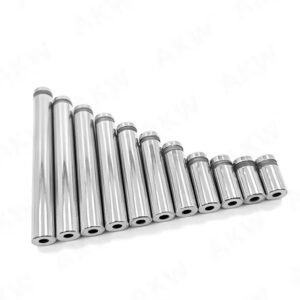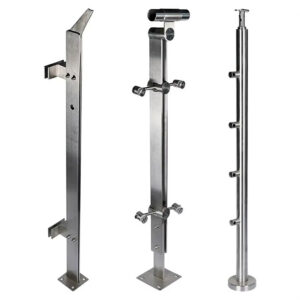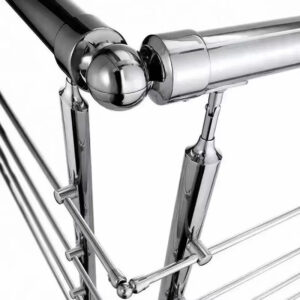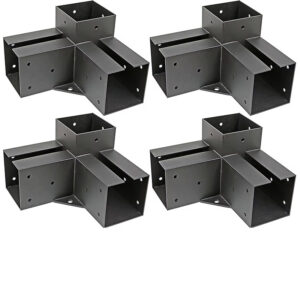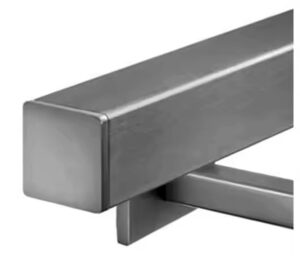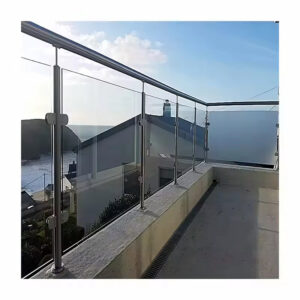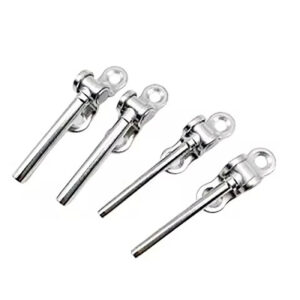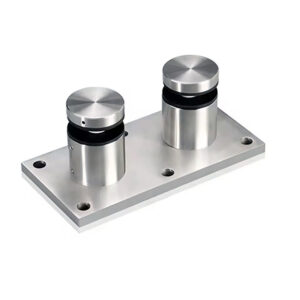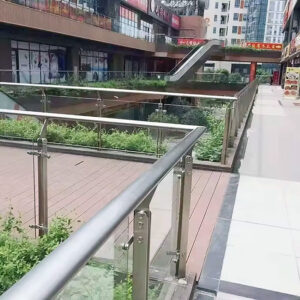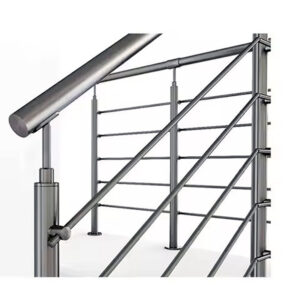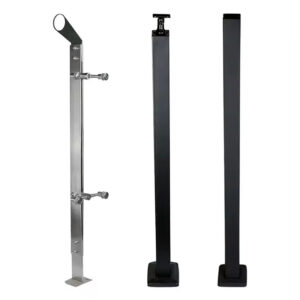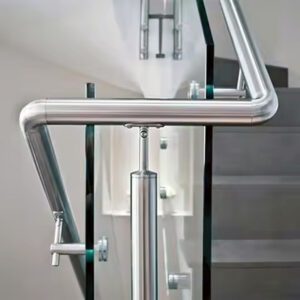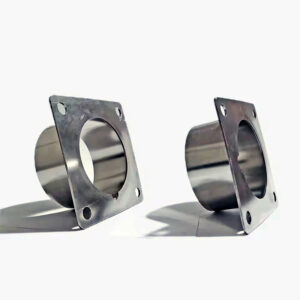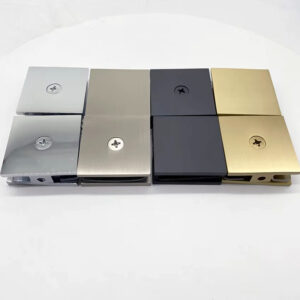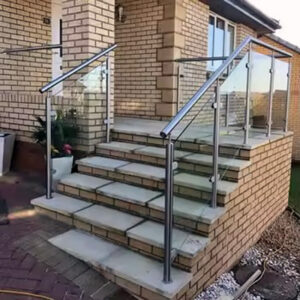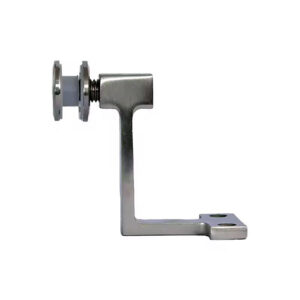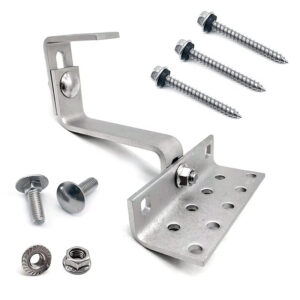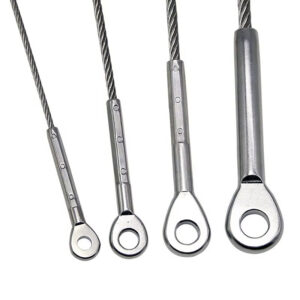Finding glass cap rail assemblies that deliver on promises isn’t easy. After 23 years manufacturing railing hardware, we’ve learned what separates reliable systems from expensive mistakes. Contractors need assemblies that install without surprises, meet codes without interpretation battles, and last without constant maintenance calls. Here’s what works—and why it matters for your projects.
Complete Glass Cap Rail Systems
Core Assembly Components
Glass cap rail assemblies center around precision-engineered components that work together as integrated systems. Top rail caps in 316L stainless provide the structural backbone, designed to accommodate glass panels from 6mm to 19mm thickness. Base shoe assemblies anchor the system with continuous or point-fixed mounting options, while intermediate clamps maintain glass alignment across longer spans.
System Integration Features:
- Modular cap rail sections with sealed joints preventing water infiltration
- Adjustable glass clamps accommodating thermal movement and building settlement
- Continuous weatherseal systems integrated into cap rail design
- Structural glazing compatibility for seamless glass-to-metal transitions
Our glass cap rail fabrication 316L processes ensure consistent tolerances across production runs. This means parts actually fit together during installation—contractors report 35% faster assembly times compared to mixed-supplier systems.
Material Selection Reality
304 vs 316L Stainless Steel Applications:
| Environment | Recommended Grade | Expected Service Life | Cost Factor |
|---|---|---|---|
| Interior/Mild Climate | 304 Stainless | 20+ years | 1.0x |
| Urban/Coastal (>1 mile) | 316L Stainless | 25+ years | 1.3x |
| Direct Marine/Salt Exposure | 316L Stainless | 15-20 years | 1.3x |
| Industrial/Chemical | 316L Stainless | Varies by exposure | 1.3x |
Marine grade glass cap systems ODM capabilities become essential for coastal projects. The extra nickel and molybdenum in 316L stainless creates measurable corrosion resistance—field testing shows 60% better performance in salt spray environments.
Surface Finish Performance
Brushed finishes hide minor scratches and finger marks while maintaining easy cleaning. Mirror polished surfaces provide architectural appeal but require more maintenance in high-traffic areas. Esang Metal brushed finishes are directional ground to 120 grit, offering the best balance of durability and appearance retention.
Technical Specifications
Load Capacity & Code Compliance
Structural Performance Data:
| Cap Rail Configuration | Ultimate Load (lbs/ft) | IBC Compliance | Deflection @ Design Load |
|---|---|---|---|
| Continuous Top Mount | 200 lbs/ft | ✓ Residential/Commercial | L/240 |
| Point-Fixed Clamp | 150 lbs/ft per point | ✓ Residential | L/180 |
| Structural Glazed | 175 lbs/ft | ✓ Commercial | L/220 |
| Heavy-Duty Marine | 250 lbs/ft | ✓ All Applications | L/300 |
These numbers reflect tested performance, not theoretical calculations. Independent testing validates load ratings under both static and cyclic loading conditions.
Glass Compatibility Matrix
Panel Specifications:
| Glass Type | Thickness Range | Cap Rail Compatibility | Installation Method |
|---|---|---|---|
| Tempered Safety Glass | 6mm-12mm | Standard clamp system | Dry glaze w/gaskets |
| Laminated Safety Glass | 6.76mm-17.52mm | Wide-throat clamps | Structural seal option |
| Insulated Units | 18mm-25mm | Heavy-duty assemblies | Continuous support |
| Low-Iron (Ultra-Clear) | 6mm-19mm | All standard systems | Standard methods |
Real-World Applications
Commercial Projects
Office buildings and retail spaces demand commercial cap rail assemblies that handle public use while meeting accessibility codes. Recent installations show consistent results:
Performance Metrics from Completed Projects:
- 40-story office tower (Chicago): 2,400 linear feet installed in 8 days
- Regional mall renovation: Zero maintenance calls after 18 months
- Hospital renovation: Full ADA compliance with 15% cost reduction vs. original spec
“Modular glass cap systems cut our installation schedule by three weeks on the downtown project.” —National Commercial Contractor
Residential Applications
Multi-family housing projects benefit from standardized systems that reduce both material costs and installation time. Precision cap rail components eliminate field modifications that slow residential projects.
Residential Project Results:
- 200-unit apartment complex: 30% faster balcony rail installation
- Custom home development: Consistent appearance across 45 units
- Condominium renovation: No code compliance issues during inspection
Marine & Coastal Installations
Harsh environments test every component. Marine grade glass cap systems require 316L stainless throughout—no exceptions. Coastal installations 23 years old show minimal corrosion when properly specified.
▶ Discuss Your Specific Project ◀
Installation & System Support
Assembly Process
Glass cap rail assemblies install faster with proper component coordination. Pre-fabricated sections arrive ready for field assembly using standard tools. Installation typically follows this sequence:
- Base preparation and anchor setting (Day 1)
- Post installation and alignment verification (Day 2)
- Glass panel placement and initial securing (Day 3)
- Cap rail installation and final adjustment (Day 4)
Installation Time Estimates
Project Size vs. Timeline:
| Linear Footage | Crew Size | Installation Days | Critical Path Items |
|---|---|---|---|
| 50-100 ft | 2 installers | 2-3 days | Anchor curing time |
| 100-300 ft | 3 installers | 4-6 days | Glass delivery coordination |
| 300-500 ft | 4 installers | 7-10 days | Structural connections |
| 500+ ft | 5-6 installers | 2+ weeks | Staging and access |
Custom glass cap manufacturing adds 2-3 weeks to material delivery but eliminates field modification time.
Quality Control & Support
Precision cap rail components ship with installation guides based on 23 years of field experience. Technical support includes:
- Pre-installation planning with detailed component schedules
- Field problem solving for unexpected conditions
- Code compliance verification with local jurisdiction requirements
- Installation training for contractor crews new to the systems
▶ Connect with Our Engineers ◀
Frequently Asked Questions
How do I choose between 304 and 316L stainless steel?
Distance from salt water determines material selection. Within 1 mile of ocean, use 316L stainless. Urban environments with moderate pollution work fine with 304 stainless. Industrial locations with chemical exposure need 316L regardless of location. The 30% material cost difference pays back through longer service life and reduced maintenance.
What’s the lead time difference between standard and custom systems?
Standard glass cap rail assemblies ship in 2-3 weeks. Custom glass cap manufacturing typically requires 4-6 weeks depending on complexity. However, custom systems often install faster due to precise fit and reduced field modifications.
Can different manufacturers’ components work together?
Mixing suppliers creates compatibility problems. Tolerances vary between manufacturers, leading to installation delays and performance issues. Integrated systems from single suppliers eliminate these problems while providing clear warranty coverage.
How do thermal movements affect glass cap systems?
Glass and stainless steel have different expansion rates. Proper cap rail design includes movement accommodation through floating connections and thermal breaks. Systems without thermal consideration develop stress cracks and seal failures.
What maintenance do glass cap rail assemblies require?
Annual inspection and cleaning maintain appearance and function. Check seal integrity, clean glass surfaces, and verify fastener tightness. Marine environments need quarterly inspection focus on corrosion indicators. Properly installed systems require minimal maintenance for decades.
How do I ensure code compliance across different jurisdictions?
IBC and IRC provide baseline requirements, but local amendments vary. Our engineering team provides code compliance documentation for specific jurisdictions. Submit shop drawings early in the permit process to avoid delays.
System Comparison & Selection
Performance vs. Budget Analysis
Investment Comparison:
| System Type | Initial Cost | Installation Time | 10-Year Maintenance | Total Cost Index |
|---|---|---|---|---|
| Economy Mixed Components | 1.0x | 1.4x | 2.1x | 1.3x |
| Standard Integrated System | 1.2x | 1.0x | 1.2x | 1.1x |
| Premium Marine Grade | 1.5x | 0.9x | 0.8x | 1.2x |
| Custom Fabricated | 1.8x | 0.8x | 0.7x | 1.3x |
Integrated systems provide the best total cost performance for most projects. Premium materials make sense for harsh environments or high-visibility installations.
Supplier Selection Criteria
Choose suppliers based on manufacturing experience, system integration capability, and technical support quality. Twenty-three years in railing hardware manufacturing provides deep understanding of what works long-term versus what looks good in catalogs.
▶ Talk to Our Technical Team ◀
Glass cap rail assemblies succeed when precision manufacturing meets practical installation requirements. Focus on proven systems, appropriate materials for the environment, and suppliers who understand the complete installation process. The right choice prevents problems rather than just promising performance.
